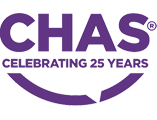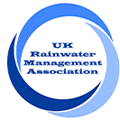Why is the communal approach to rainwater harvesting best?
05/10/2023
Communal rainwater harvesting systems on new housing developments are widely recognised by the water industry as the best approach to achieving water reuse at scale. But why is this? This blog will help you understand why there are growing calls for communal-style systems to be made mandatory for new housing developments.
The way water is managed on developments needs to change. Instead of relying on aging infrastructure installed during the Victorian times, rainfall is best managed as close to where it lands as possible. Managing rainwater should not be restricted to temporary attenuation of the rainwater which involves holding the rainwater in storage and slowly releasing it for drain. Water reuse is as important as attenuation capacity, and, in fact, both technologies are complementary and can work together to achieve improved water management.
After all, rainwater harvesting technologies are helping to contribute towards solving the three biggest problems that the water industry is facing. First, water scarcity is threatening the viability of future developments with areas of the Southeast considered ‘seriously water stressed’ by the environment agency. Currently, households in the UK use on average 149 litres of water per person per day. In some areas, like Crawley, some industry professionals are calling for water consumption to be reduced dramatically to just 84 litres of water per person per day. These savings can only be achieved by improving water efficiency.
Increasingly unpredictable weather conditions caused by climate change also mean larger volumes of stormwater are entering the traditional drainage network. Aging drainage networks process both cleaner stormwater and human waste in one and transport it all for treatment. The problem is that most stormwater is relatively clean and clear and does not require the same level of filtration as more polluted human waste. When the drainage system becomes overwhelmed in the event of a large storm, untreated human waste is released into surrounding rivers and streams to prevent the whole drainage network from backing up. In 2019, this resulted in 1.5 million hours’ worth of pollutants being released through combined sewer overflows (CSOs).
The transportation and filtration involved in mains water production is highly carbon intensive when compared to sustainable water supplies produced through rainwater harvesting systems. For every metre cubed of rainwater used over mains water, a saving of 0.285 kg of carbon can be saved. Scaling this up to 1000 metres cubed of water, the total carbon saving through using rainwater harvesting would be 285 kg of carbon.
The need for water reuse is clear. Now, let’s focus on the best way to implement rainwater harvesting on new housing developments.

Centralised monitoring of water savings.
Regular planned maintenance by a specialist is important for ensuring the risk of breakdowns is reduced and optimum water savings can be achieved. The design of the system should incorporate multiple failsafe features to ensure homes are not left without a water supply once installed. It is recommended that an experienced manufacturer who has many years of experience dealing with the manufacturing and maintenance of rainwater harvesting systems be chosen to achieve the best outcome. The community system can be maintained by Stormsaver’s specialist rainwater harvesting engineering team. As part of necessary planned preventative maintenance, the engineer will;
Remove debris from the pre-tank mesh filter to maintain high filter efficiency and excellent water quality for homeowners.
Reduced maintenance requirements can be achieved within community rainwater harvesting systems by including automatic backwash technologies during the design stage. This eliminates the requirement for the physical replacement of cartridge filters.

My role as a Water Reuse Specialist means I get to keep up to date with all things water conservation. My favourite water saving tip is to turn taps off when brushing your teeth! I think rainwater harvesting and the water reuse industry is exciting, and I love sharing updates with our customers. View Matt’s Stormsaver profile here.
Privacy Policy Cookie Policy Site Map
Copyright © 2025 Stormsaver Ltd. All Rights Reserved.






